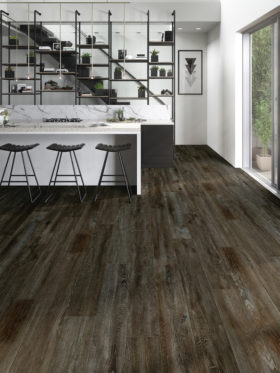

Choosing the right front door is all about getting the best combination of aesthetics and efficiency (in terms of thermal values, weather ratings and security) within your budget. How important each of these criteria will be depends very much on personal preference.
Is low maintenance more valuable to you than looks, for instance? Will your door have to stand up to the elements? Does it need to be in keeping with neighbouring properties and enhance the characteristics of your home?
Style options are extensive – from bespoke modern designs to traditional panelised timber doors and wood-effect alternatives. You can select from a host of colours and glazing types, too. There’s just as much choice with hardware and accessories: handles, letter plates, spyholes and door knockers are available in a variety of materials and finishes.
Every element used on a build has to meet certain minimum standards, so look for assurances such as the BSI Kitemark and assessment by the BBA (British Board of Agrement). Ideally, production and supply should be carried out under the ISO 9001 quality management system, which shows the manufacturer’s commitment to customer service.
Accessibility is a vital factor. Under the Building Regs, every entrance door should provide a minimum clear width of 775mm, which is measured between the doorstop and the face of the open door. The weatherboard and ironmongery can project into this aperture. The threshold must be level or no taller than 15mm.
On top of these considerations, you may have specific targets for areas such as energy efficiency (eg Passivhaus) or security (such as the police-approved standard Secured by Design – see page 146).
For this cost guide I have focused on the price of hardwood, PVCu and composite doors (note the latter can have three different core constructions). Here are the basics you need to know about each type before you buy:
These are attractive solid timber options available in plenty of colours, with door furniture easy to replace if you want to change the look in future.
While the door and frame components stand out as the cheapest, that quickly changes once you’ve added in all the furniture, weather bars, glazing units etc you may need.
This kind of door also takes longer to fit than modern versions, plus it’s not likely to meet modern thermal standards – hence it’s most commonly used as a replacement option for projects where preserving character is vital.
A practical, affordable choice requiring very little upkeep, this type of door will never need sanding, treating or painting – just a wipe down every so often to keep it looking good. They’re also pretty thermally efficient.
Do your research before you buy, though, as the quality of the blending, extrusion, injection moulding, foil finishing, colour matching and other criteria will make a significant difference to the door’s lifespan, and therefore future maintenance and replacement costs.
Check the security standards, too: does the door come with multi-point locking, for instance?
This option gives you the look and feel of a timber door, but without the maintenance (expect to have to do little more than an occasional wipe down with soapy water).
Essentially, you’re buying a highly insulated door core, which is then clad in an outer skin, such as a strong wood-effect design. As you’d expect, the combination of good looks and practicality pushes these doors up the cost scale.
There are three main composite contenders:
These figures are based on a traditional-looking 1,981mm-tall and 930mm-wide front door, including the frame and other elements required for installation. We have assumed the units are being kitted out with standard-quality door furniture.
| Door Type | Door & frame | Sundries | Fitting cost | Builder's profit | Total before VAT | VAT at 20% | Total incl. profit & VAT |
|---|---|---|---|---|---|---|---|
| Hardwood | £368.00 | £228.68 | £301.54 | £269.46 | £1,167.68 | £233.54 | £1,401.22 |
| PVCu | £400.00 | £26.88 | £168.22 | £178.53 | £773.63 | £154.73 | £928.36 |
| GRP composite | £680.00 | £26.88 | £168.22 | £262.53 | £1,137.63 | £227.53 | £1,365.16 |
| Steel composite | £820.00 | £26.88 | £168.22 | £304.53 | £1,319.63 | £263.93 | £1,583.56 |
| Timber composite | £1,000.00 | £26.88 | £168.22 | £358.53 | £1,553.63 | £310.73 | £1,864.36 |
Note: Self build projects qualify for zero-rated VAT on labour and materials, but renovators will need to pay the usual 20% VAT on both. Cost information for PVCu and GRP composite doors kindly supplied by Crystal Direct, an award-winning UK manufacturer of windows, doors and conservatories.
